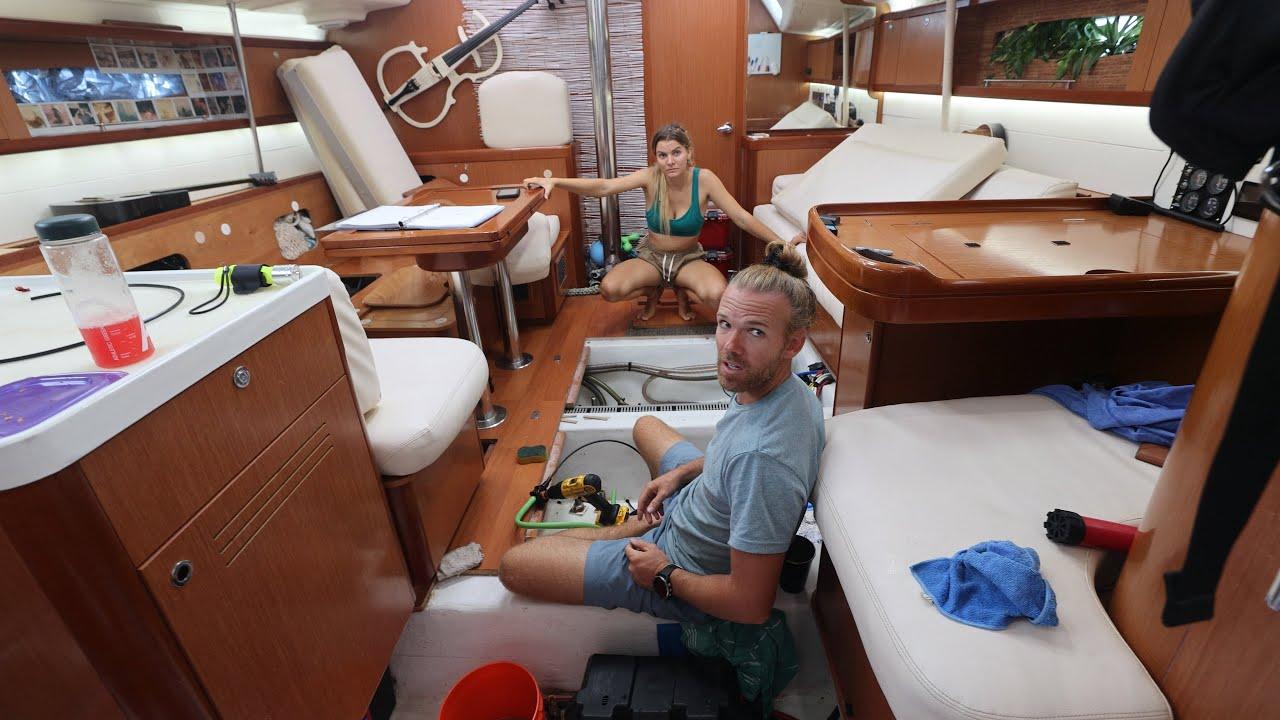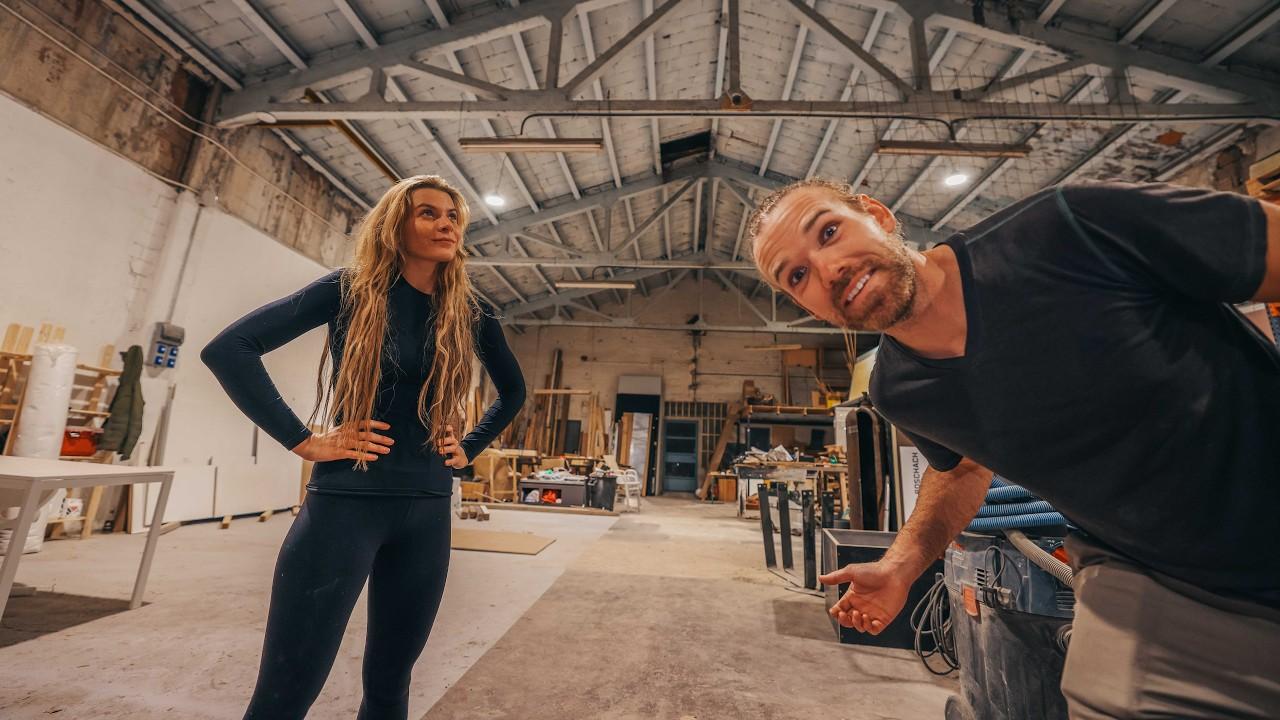In the YouTube video titled “TAKING ON WATER! 😫 Crossing the Atlantic Update (Day 17) (we’re ok!!) | EE 129,” the sailors share an update on their journey across the Atlantic. The video starts with the main sail being put away due to the lack of wind, and the head sail being left out for stability. However, just moments later, a loud pop is heard and the crew discovers that the head sail has completely ripped off. With no main sail and only the head sail remaining, their plans to get new sails have been expedited. Despite this setback, the sailors remain optimistic and continue their journey towards their destination. Stay tuned for more updates on their progress and challenges faced during this daring adventure.
Headings:
- Sail Damage: The Unexpected Mishap at Sea
- A Major Setback: Our Mainsail Rips Mid-Journey
During our voyage, we encountered a frustrating setback when our head sail suffered severe damage. We had just put away the head sail due to lack of wind and had the Mainsail out for stability. However, after about an hour, we heard a small popping sound and discovered that the clue of the head sail had completely ripped off. This crucial part, located at the back corner of the sail, had detached, leaving us with zero percent of a Mainsail. While we still have the head sail, the loss of the Mainsail has prompted us to expedite our plans of acquiring new sails.
The incident took us by surprise as it occurred without any strong gusts or adverse weather conditions. It was as though the sail simply decided to detach itself. Luckily, the clue remained intact, allowing us to have some control over the head sail. Nonetheless, the absence of the Mainsail affects our ability to navigate efficiently. Currently, we are approximately 133 miles from our destination, Horta, with 12 knots of wind behind us. However, we are forced to rely on motoring rather than sailing due to the lack of functional sails. Although this setback is concerning, we remain hopeful that we can overcome this obstacle and safely reach our destination.
1. Sail Damage: The Main Sail and the Head Sail
When it comes to sail damage, two important sails to consider are the main sail and the head sail. In a recent sailing excursion, the main sail experienced a significant tear, while the head sail suffered a complete detachment at its clue. This unexpected event has left our crew without a functioning main sail, but we still have the head sail intact.
The damage occurred during a period of light wind, without any sudden gusts or strong forces. The crew noticed a slight pop sound and upon investigation, realized the main sail had ripped and the clue of the head sail had completely detached. Although the loss of the main sail is a setback, the head sail continues to provide some stability by keeping the boat from rocking excessively.
It is worth noting that our sails were already old and lightweight, which likely contributed to the incident. While we had plans to replace them soon, this incident has accelerated our timeline. As we continue our journey, approximately 133 miles away from Horta, we are currently motoring with no head sail deployed due to its inability to withstand the rocking motion caused by the waves. Despite the challenges, our crew remains optimistic and focused on finding a solution.
2. Impact of the Sail Damage on the Journey
The sail damage has had a significant impact on the journey. Initially, the head sail was stowed away due to lack of wind, leaving only the Mainsail for stability. However, after about an hour, a sudden pop was heard, indicating that something had gone wrong. Upon inspection, it was discovered that the clue of the sail had completely ripped off, leaving them with zero percent of the Mainsail. Although they still have the head sail, the loss of the Mainsail has prompted them to expedite their plans of getting new sales.
The cause of the sail damage remains a mystery. There were no strong gusts or unusual weather conditions at the time of the incident. The crew suspects that their old, lightweight sales may have played a role in the damage. Nevertheless, they continue on their journey, currently about 133 miles from their destination. Motor-sailing has become necessary since there is no head sail, and they are concerned about potential fog ahead. Despite the setback, the crew remains optimistic, even managing to capture a picture of dolphins along the way.
3. Recommendations for Sail Replacement and Maintenance
During our recent sail, we unfortunately experienced the complete rip of our main sail’s clue, which detached from the sail at the very back corner. This unexpected event left us with zero percent mainsail and only our head sail. Fortunately, we were still able to maintain some stability by keeping the head sail out while sailing. However, this incident has prompted us to prioritize the replacement and maintenance of our sails sooner than expected.
Upon investigation, we realized that the lightweight and old condition of our sails contributed to the tear, despite the absence of strong winds or gusts. It was a relatively calm moment when we heard a subtle pop and discovered that the main sail had become detached and was wiggling on the side of the boat. Thankfully, the clue remained intact, which made it easier for us to address the issue.
To prevent similar incidents in the future, we recommend the following tips for sail replacement and maintenance:
- Regularly inspect your sails for any signs of wear and tear, paying close attention to the clue attachment point.
- If you notice any fraying, weakening, or damage, it is advisable to replace the sail or consult a professional sailmaker for repairs.
- When selecting new sails, consider the specific conditions in which you will be sailing, as well as the durability of the materials used.
- Maintain a proper sail care routine, including regular cleaning, drying, and storage in a dry and well-ventilated area.
- Implement preventive measures such as reefing or furling the sails during unfavorable weather conditions to reduce stress on the sails and minimize the risk of tears or detachment.
- Stay informed about weather conditions and plan your sailing trips accordingly to avoid unexpected surprises at sea.
By following these recommendations and prioritizing sail replacement and maintenance, you can ensure the longevity and performance of your sails, minimizing the chances of encountering similar incidents while sailing. Remember, a well-maintained sail is essential for a smooth and enjoyable sailing experience.
4. Navigating Challenges: Fog on the Horizon
horizon as we navigate this challenge. Losing the Mainsail due to a rip in the clue has definitely thrown a wrench in our plans. However, we are staying hopeful and adapting to the situation.
Although we still have our head sail, not having the Mainsail means we have lost a significant amount of power and stability. It’s a good thing we had the foresight to keep the Mainsail furled, otherwise, things could have been much worse. As we continue on our journey, we are faced with the task of finding a solution and getting new sails sooner than expected.
Currently, we are about 133 miles away from our destination, Horta. The good news is that we have a decent amount of wind behind us. However, since we don’t have the head sail out, we are relying on our motor to sail. This situation has made us realize the importance of having reliable and sturdy sails. We are now more determined than ever to make it through this challenge and overcome any fog that may arise on the horizon. horizon today but nope it’s a clear day. So, as you saw in the video, we encountered a bit of a mishap with our sails. The head sail completely ripped off from the sail, leaving us with zero percent mainsail. Luckily, we still have our head sail, but this unexpected turn of events means that our plans to get new sails have now been expedited. It’s interesting how things can change so quickly during a crossing like this.
Despite the setback, we remain calm and focused on finding a solution. We are grateful that the incident happened in relatively calm conditions and that our boat remained stable. One silver lining to all of this is that we were able to capture some incredible footage of dolphins during the ordeal, reminding us of the beauty and unpredictability of the ocean.
As we continue towards Horta, approximately 133 miles away, we are currently motor sailing with no head sail. We have about 12 knots of wind behind us, making the journey a little smoother. We are also keeping an eye out for any potential fog that may hinder our progress.
Thankfully, this is our last day at sea, and while it hasn’t been without its challenges, we are grateful for the experience and the lessons learned. It’s moments like these that remind us of the resilience and adaptability required when sailing across the Atlantic.
We appreciate your support and positive messages throughout our journey. Stay tuned for updates on our arrival in Horta and our plans moving forward. Thank you for joining us on this adventure, and remember, even in the face of challenges, never lose sight of the beauty that lies beyond the horizon.



